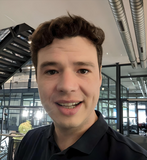BibTeX
@inproceedings{Raj3DV25,
TITLE = {Spurfies: {S}parse-view Surface Reconstruction using Local Geometry Priors},
AUTHOR = {Raj, Kevin and Wewer, Christopher and Yunus, Raza and Ilg, Eddy and Lenssen, Jan Eric},
LANGUAGE = {eng},
PUBLISHER = {IEEE},
YEAR = {2025},
PUBLREMARK = {Accepted},
MARGINALMARK = {$\bullet$},
BOOKTITLE = {3DV 2025, International Conference on 3D Vision},
ADDRESS = {Singapore},
}Endnote
%0 Conference Proceedings %A Raj, Kevin %A Wewer, Christopher %A Yunus, Raza %A Ilg, Eddy %A Lenssen, Jan Eric %+ Computer Vision and Machine Learning, MPI for Informatics, Max Planck Society Computer Vision and Machine Learning, MPI for Informatics, Max Planck Society Computer Vision and Machine Learning, MPI for Informatics, Max Planck Society External Organizations Computer Vision and Machine Learning, MPI for Informatics, Max Planck Society %T Spurfies: Sparse-view Surface Reconstruction using Local Geometry Priors : %G eng %U http://hdl.handle.net/21.11116/0000-0010-8FAB-D %D 2025 %B International Conference on 3D Vision %Z date of event: 2025-03-25 - 2025-03-28 %C Singapore %B 3DV 2025 %I IEEE

